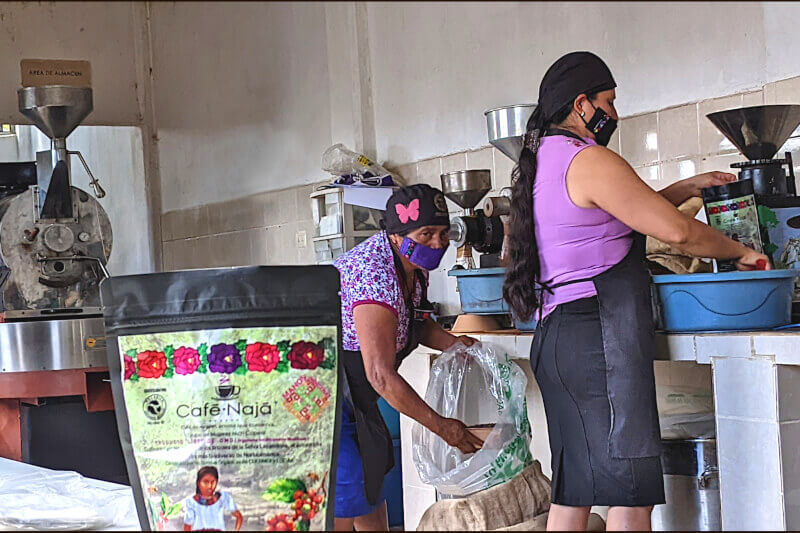WOMEN AND COFFEE
CAFÉ NAJA, ZARAGOZA, CHIAPAS, MEXICO

Women have pride of place in these mountains "close" to the Guatemalan border. The way of life from one village to the next, even when geographically close, sometimes differs drastically. From one child per woman there, to an average of eight right here.
At Café Naja, in the municipality of Zaragoza, the women are getting organized. They roast and pack the coffee themselves. They meet regularly to make decisions together. Between 15 to 20 of them come, taking turns, depending on their availability. It's not easy to get a job in certain regions and for certain reasons. Those who take part in the adventure are delighted.
They are also proud to present their cultivated land, the milpa. This Nahuatl term means "what is sown in the field". This is an ancestral agricultural system of rotation and diversification of cultivated species in a given space. Plants complement each other in the field, as they have different nutrient requirements, and some provide shade or support for others. Moreover, the combination of these foods provides a balanced diet.
In the fields, pozol, a drink of water and corn paste, accompanies the workers throughout the day.
Their efforts have paid off, but they still need more energy to keep going on, as they always did. Museums in San Cristobal de Las Casas, a city in the state of Chiapas, trace the injustices suffered by indigenous peoples throughout history. Even after the end of slavery, the situation remained cruel for many of the indigenous. Forced labor was widespread on coffee farms, under the concept of `enganche. Theoretically, the system was designed to alleviate labor shortages in remote areas by means of an advance on wages. In reality, the landowners who already benefited from the indigenous people's land did not respect any labor laws and did not pay the workers what they owed. The latter had no recourse to enforce their rights. This situation continues today in various forms in the coffee-growing industry. Many harvesters have to migrate with the seasons to find work on the farms. Housing is sometimes precarious and overcrowded, and workers pay for meals and accommodation, deducted from their wages.
Many thanks to Darwin and to Aurora and her family for their warm welcome and availability. Congratulations to the San Cristobal de las Casas coffee museum for their historical and cultural presentation of coffee.
Butterfly effect
Our choices shape many lives
like the butterfly effect
Cheap coffee means millions of families are stolen from
Wing flapping in shops echo the rhythms of planters' heartbeats.s de là-bas

CHILÓN CITY HALL

WILD COFFEE BEANS

GRINDING AND PACKING

DRYING PARCHMENT COFFEE #1

DRYING PARCHMENT COFFEE #2

DRYING PARCHMENT COFFEE #3

HOMEMADE TORTILLAS

DEFECTS ON GREEN BEANS

HOMEMADE COFFEE ROASTING
